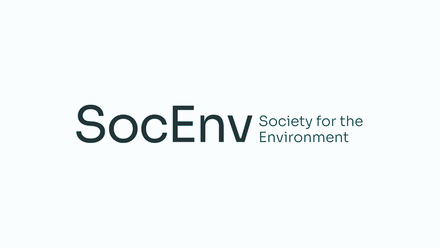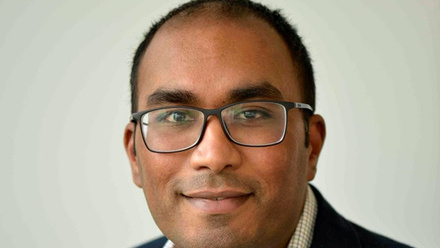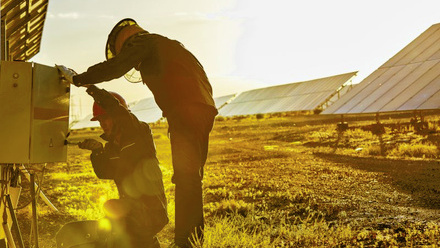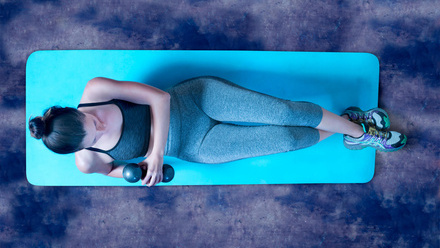Reaching out to STEM ambassadors
STEM ambassadors share their experiences of outreach work.
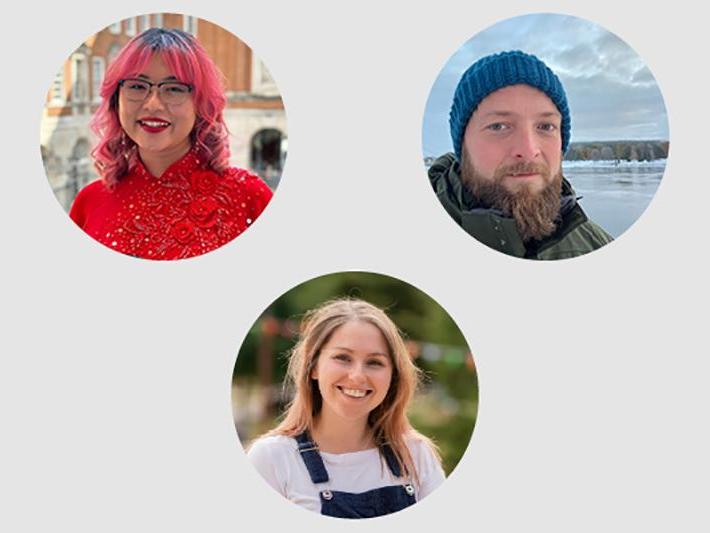
IOM3 Student Member Huyen Le is a voluntary Discover Materials Ambassador and PhD student in the Department of Materials at Loughborough University, UK, researching how to use light energy to transform the materials used in paint formulations. She recently received a Top 50 Women in Engineering award.
Who inspired you to get into STEM at school?
My journey into STEM was shaped by a combination of personal circumstances and pivotal experiences. As a first-generation minority ethnic student from an immigrant background, I lacked access to role models with similar stories who had succeeded in the STEM industry. In my upbringing, emphasis was placed on traditional values rather than on employability and technical skills. A defining moment for me was participating in the BP Science and Engineering Day Challenge Event during Year 9. Although our team didn’t win, the experience allowed me to interact with BP staff, gaining insights into the inner workings of the industry. This exposure broadened my horizons beyond the classroom and ignited my passion for STEM.
What different types of STEM outreach do you get involved in?
As a STEM Ambassador at GlaxoSmithKline (GSK), I designed work-experience programmes tailored to local state schools. Additionally, I have my own blog and podcast where I share insights into my research career and provide guidance to others on navigating their educational and career paths. Since starting my PhD, I have also participated in community events, public lectures and competitions to introduce my research to a broader audience locally and internationally.
How did you get involved with outreach?
I am deeply passionate about making STEM fields more diverse and inclusive. Drawing from my own experiences and those of individuals from underrepresented backgrounds, I have met amazing mentors on my self-development journey, and I want to give back to my communities. My goal is to promote interest in STEM while demystifying myths that others may have about STEM education along the way.
What has been your greatest success?
In my role as a Life Sciences Placement Connector at the University of Sussex, UK, I had the privilege of helping students navigate the challenges of securing STEM work experience and improving their employability skills amid the uncertainties of the pandemic. Winning a National Excellence Award from AGCAS for our efforts underscored our commitment to supporting students and considering their mental health in the process.
This experience reinforced the importance of empathy, flexibility and solidarity in overcoming obstacles and achieving collective success. It holds significant importance to me, not only for its professional accolades but also for the humanity it embodied – a reminder that even in times of crisis, we have the power to uplift and empower one another through kindness, support and genuine human connection.
Is there something that hasn’t worked?
Lack of target audience engagement has been a challenge for me. Initially, I held a limiting belief that I needed to use complex language to appear knowledgeable. However, I learnt that being concise and authentic is more effective in connecting with audiences and addressing their interests and cultural backgrounds.
Do you have some top tips or key points?
I have found that collaborative outreach activities are most effective. By partnering with others, we can leverage a wider network of resources and expertise to achieve greater impact.
What have you personally gained from it?
Engaging in outreach activities has been personally fulfilling for me. It has allowed me to bridge the gap between STEM and the broader community, contributing to a more equitable and welcoming environment for individuals from underrepresented backgrounds. Additionally, it has helped me become a more effective communicator and empowered me to contribute to improving STEM education and public understanding.
How do you think diversity can be increased in STEM?
Increasing diversity in STEM requires equitable access to opportunities. Addressing systemic barriers such as financial constraints, lack of exposure and cultural stereotypes is essential to unlocking the full potential of individuals from underrepresented backgrounds. By promoting visibility, challenging stereotypes, and providing mentorship and support networks, we can create more inclusive environments where everyone feels valued and empowered to pursue STEM.
Ben Lepley MIMMM transitioned to work on environmental, social and governance issues within the minerals exploration and mining industry after 12 years as a mineral resource geologist. As part of his role for the Geological Society of London Council, Ben flies the flag for geoscience to improve public knowledge of the subject and responsible mining. He is a regular participant and former member of the Critical Minerals Association and an ambassador of STEM Learning UK.
Who inspired you to get into STEM at school?
My own geology teacher inspired me – she was always such an advocate for geology and inspired me to get into it. After seeing the decline in student numbers in recent years, I thought I would do something to try to spread the word and boost knowledge of a subject that does not get much time in curriculums.
What different types of STEM outreach do you get involved in?
Over the last few years, I have developed an outreach kit designed to get kids engaged in geology, minerals and mining, and encourage them to study or work in the industry. It is based on the Briefcase Game, created by EIT Raw Materials (EU-funded). The idea is to demonstrate the link between everyday products and items that we all have, and their humble beginnings in rocks and minerals.
It is very hands-on and generally a chaotic blur of questions and magnets. But it never fails to get the audience thinking about something they have not spent much time wondering about – where does our stuff come from?
I like to physically take my rock box into school classrooms or other educational settings such as the Scouts and Geological Society, but I have also delivered presentations online.
How did you get involved with outreach?
I got involved through talking with my own kids and being invited to talk at their school. Through this, I saw how some kids were really fascinated by it, and even more surprising to me, how the teachers were often equally as interested. There is such little time and space in the curriculum for geoscience and the role of natural resources in modern society, which means kids and their teachers get little exposure to it.
What has been the greatest success?
The greatest success has been reaching a large number of kids and teaching them something they had almost no exposure to. The part of the lesson that usually promotes the most excitement is, ‘How old is my rock?’, where they guess the age of my chalcopyrite specimen from Sweden (spoiler – it is two billion years old).
Do you have an example of something that hasn’t worked?
Occasionally things do not go as smoothly as planned and pitching at the right level can be tricky without proper teacher training. One of the least successful events was at a secondary school with a class of 15-16-year-olds. Most of the students simply were not keen to engage and were bored. You will not always be able to entertain them all – particularly if you have large groups.
Do you have some top tips or key points?
In order to get your outreach project or event known, promote it (create an offer) through the STEM Ambassador website, and for minerals and mining, I would also suggest linking it to the Minerals Matter STEM scheme for additional support. Before delivering, ensure you understand the audience so you can better plan. Always have a rough idea of a lesson plan to make sure your timings are not completely off and to help you if you are struggling to remember your key points. Start with learning objectives and build the lesson around them. If in doubt, consult a teacher!
What have you personally gained from it?
I have found it an enriching experience. The kids are generally very responsive to outside speakers – especially if you have shiny rocks and magnets. Sometimes they come up with pearls of wisdom way beyond their years, or ask a question so challenging it can be difficult to respond to. It is a different experience in every classroom and every age group.
How do you think diversity can be increased in STEM?
We need to demonstrate that industry and the workplace reflects the diversity seen in schools and universities. So, I call on industry representatives with diverse backgrounds to get involved in STEM outreach – you can’t be what you can’t see.
Lizzie (Elizabeth) Driscoll MIMMM is a Research Fellow at Birmingham University, UK, with several years of experience in materials chemistry for energy applications. She is also the recent winner of the IOM3 Robert Perrin Award for outstanding and sustained commitment to outreach activity targeted at 11-19 year-olds.
Who inspired you to get into STEM at school?
I have two answers for this – the obvious one being my teachers, and the second – my older sister who also has a PhD in battery technology. I always enjoyed science lessons, and the topic just came quite naturally to me. I think I realised there might be something there when I won the Lower School Science award.
What different types of STEM outreach do you get involved in?
The activity type ultimately depends on the setting and the audience I’m trying to engage with. With school students, this has either been workshop based, where students trial the demonstrations themselves, or in lectures, where I invite volunteers to join me. Other types of outreach activities include generating infographics, educational booklets and interview videos. All of these methods have one thing in common though – time.
How did you get involved with outreach?
I first got involved through supporting the sessions of others. One of the first activities was probably in 2018, where I supported Dr Zoe Schnepp and Dr Nicola Rogers with their ChemBAM alginate cancer treatment workshop in a local school. With the addition of Dr Ruth Patchett (School of Chemistry outreach officer) and Dr Chris Hamlett (Discover Materials lead) at the university, I ended up getting involved and supporting different events, from more school workshops to local park festivals. In 2019, Ruth suggested I apply for some outreach funding. This led to my Lithium Shuffle Project and my giant battery jenga sets, which are different medias of exploring lithium-ion battery operation. So, in the space of a few years, with the encouragement/support from Professor Peter Slater FIMMM, I went from observing activities to fully leading and organising these style of events.
What has been the greatest success?
My greatest success has to be my battery jenga set. We took the classic garden set and adapted it so the blocks looked like the crystal structures of the battery electrodes used in lithium-ion batteries. The jenga sets can then explore battery operation, degradation and charge rates, through the movement of the lithium-ion blocks. The earlier sets involved painting the crystal structure (I think I spent about 20 hours on the evenings painting!). In developing the resource to be accessible to visually impaired students, we moved towards texture surfaces for it to be tactile.
Do you have an example of something that hasn’t worked?
In December 2022, I was asked to deliver an outreach lecture for Year 8/9s at the university. My final sketch was the 12 days of battery Xmas, where instead of using the classic lemon battery (copper coin and zinc nail into a lemon), I was using all sorts of food items associated with Xmas. Because of the time constraint for preparation, we didn’t test all the items out. As it happens, gravy and butter do not work. Carrots and mince pies, however, are a tried and tested method to build a circuit. My carrot record is 13V.
Do you have some top tips or key points?
Give it a go – this could be supporting the sessions of others or leading your own activity. From this, you find the type of outreach and style that works for you. And make sure you enjoy it! You’re not going to inspire anyone if you’re not excited yourself.
What have you personally gained from it?
I remember when I first started my PhD back in 2017, I didn’t look forward to group meetings and speaking up in front of others. Now…well it’s difficult to shut me up. I have found outreach to provide me the space to grow my confidence in public speaking and develop my presentation style (both in outreach and my research), where I can tell a story and not get lost in all the data. In addition, it’s really provided me with a creative outlet, where I have the freedom to translate complex ideas into a useful and accessible resources.
How do you think diversity can be increased in STEM?
I think we need to have more visible role models. The difficulty in this regard though, is if you’re within an underrepresented group, you’ll probably be asked a lot more to support these events. So while being visible, we need to ensure the burden isn’t just on the select few. One instance to promote diversity could be signposting resources and highlighting profiles in an educational setting.


